“Personal accountability is never about others, it’s always about me looking in the mirror and making better choices.”
John G. Miller
The concept of personal accountability and taking responsibility for one’s actions and situations at work popularized by the book QBQ! The Question Behind the Question by John G. Miller. It’s an easy read and I highly recommend it. It was recommended to me by Nicole Tirado.
When I teach PMP classes, we talk about how people who are responsible for the work perform the work. In predictive approaches, there is only one person who is accountable for the work, defined as “answerable to the outcomes.” I like to think of accountability as “you can count on me.” Sure, predictive approaches denote only 1 person as accountable (young Jessika in 2008 would picture a bottle of A1 sauce to remember this), but now most projects are hybrid (mix of predictive and adaptive). And many are adaptive, whereby a specific role is accountable for the outcomes, not just one person. For example, in Agile Scrum, the development team (one role, a handful of people) is accountable for achieving the sprint goal. Moreover, in proprietary frameworks such as The Oz Principle, everyone is encouraged to be accountable at organizations these days. The Oz Principle includes their own proprietary “ladder” and trainings. I have seen an organization adopt this framework and achieve a near-perfect NPS score.
If you are not ready to adopt a proprietary framework, a quick search engine search will certainly deliver Accountability Ladders galore.
An Accountability Ladder is a literally a nice visual of a ladder that helps individuals understand the levels of accountability (and what I like to also call levels of respond-ability, though I did not make up this term). They can literally point to it when discussing or analyzing their actions and behaviors. The ladder helps us assess where we currently stand in terms of accountability and reminds us to move towards higher levels of responsibility. We can also use it to help coach someone “up the ladder.” In this way we can help to guide self-reflection, personal growth, and foster a culture of accountability within our team and organization. By recognizing where they are on the ladder, individuals can consciously choose to move up to higher levels of accountability and take ownership of their actions and outcomes. By applying a trauma-informed lens, we are truly coaching from a heart-centered place.
Here is an example ladder from the Superconscious Leader perspective. If you are studying for your PMP this can still be of use to you, as in the latest authorized courses and PMBOK, PMI cites Maslow’s work, and before he died, he added Self Transcendence to the top of his pyramid. Self-transcendence, in this context, refers to the desire to go beyond the self and find meaning and purpose in connecting with something greater than oneself. It involves a shift from self-centered concerns to a focus on contributing to the well-being of others and the world. It is often associated with feelings of unity, altruism, and a sense of interconnectedness with all living beings. When I teach ITIL we often reference Barret’s Model (Full Spectrum Consciousness). ‘Transcendent’ is the highest level, characterized by a sense of unity with the world and recognizing interconnectedness. I particularly like the diagram shown in this page.
Fitting Conscious Leadership into the Big Picture
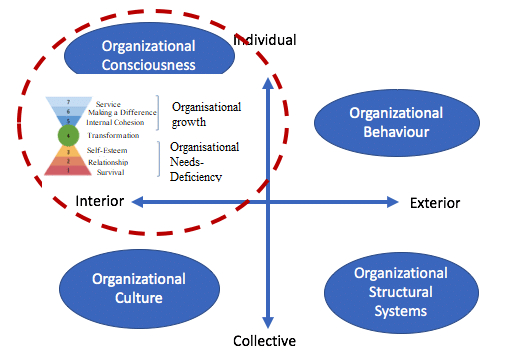
Used with permission (CC license)
Full text [PDF] available here
Superconscious Accountability Ladder
Below the Line Levels (1-4): “Things happen to me” (External Locus of Control) Behaviors
General tips here:
- Check for threat physiology, and try to help this person/yourself “get to green.” Check out the bottom of this post, as co-regulation is a superpower.
- Understanding DiSC styles also helps, as each style can typically misuse/overuse their superpowers in predictable ways.
Level 1: Denial /Avoidance
At the bottom of the ladder is denial, where individuals are in complete denial or avoid acknowledging the problem. They may be disconnected from their true feelings, needs, and inner conflicts. Parts (IFS) likely have involvement in keeping the focus off any problems.
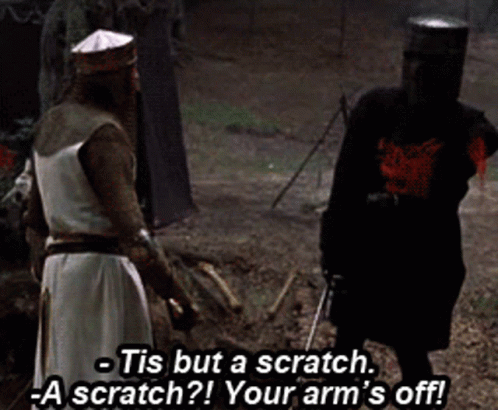
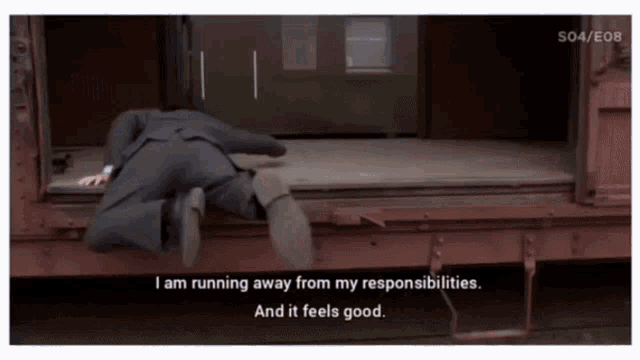
Coaching someone “up the ladder” should be done in a trauma-informed fashion, considering factors like polyvagal perspective (RED or YELLOW zone involvement) and nervous system dysregulation.
Notes on parts: A part or parts might be working to suppress or numb emotions, memories, or experiences that are too overwhelming to handle. Their purpose is to protect the individual from distress.
Level 2: Blaming
At this level, individuals are driven by internal parts that tend to point fingers and blame others. They react to external triggers without awareness and may act impulsively or defensively, without considering the consequences of their behavior. Trauma-informed coaching is also essential at this stage.

Notes on parts: Individuals in this stage might have “manager” parts that operate by blaming others or external circumstances as a way to protect the person from feelings such as fear, anxiousness, shame, or guilt. These parts attempt to shift responsibility away from the individual and onto someone or something else.
Level 3: Excuses
In this stage, internal parts chime in with statements like “I can’t…” as a way to avoid taking responsibility.
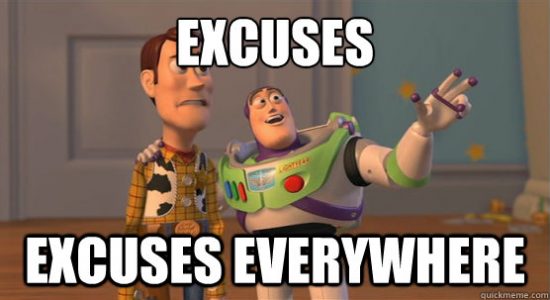
Notes on parts: Here parts might convince the person that they are incapable or unworthy, providing a shield against facing potential failure or rejection.
Level 4: Wait and See
The problem is acknowledged, but avoidant parts assure the person that things may magically work out without active engagement.
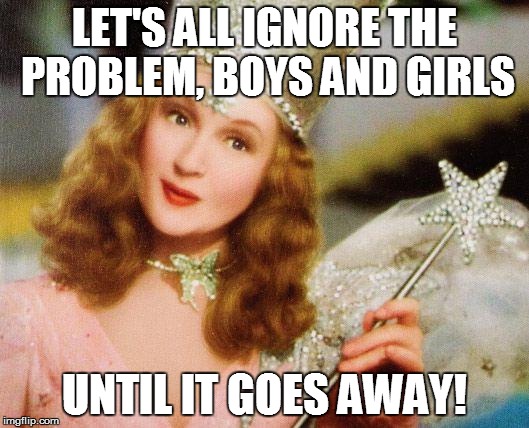
Notes on parts: Avoidant manager parts may be active in this stage, encouraging the person to avoid taking immediate action. They might foster a sense of hope that the problem will resolve itself, reducing the need for the individual to confront potential challenges.
Above the Line Levels: “Things happen because of me” (Internal Locus, Conscious and/or Super Conscious) Behaviors
General tips here:
- Physiology seen is usually GREEN, SUPER GREEN, etc (ventral vagal influence/activation.. note the “V V” below)

- DiSC “superpowers” come through (without misuse)
Level 5: Acknowledgement
At this level, individuals move beyond “wait and hope” and genuinely acknowledge the problem. There is early involvement of Self Energy or parts that pop up to manage and behave based on rules. That is to say: Self Leadership may be in play at this point.
Notes on parts and Self: Self-Energy is the presence of the core Self, and it may start to influence the individual’s thoughts and actions at this level. It may provide a sense of grounding, clarity, and inner strength, allowing the person to face the problem with authenticity and honesty. Helpful parts that may be involved include: caretaker part, organizer part, rule-follower part, solution-seeker part, courageous part, etc. The key here is to assess if these parts are helping/”helping” due to their innate resourcefulness and helpful qualities, or have they taken on more of an extreme role?
Level 6: Owning It
This stage is usually broken down into multiple steps. Individuals take a position, put on a solution-finding hat, and implement solutions. This can involve active engagement of both parts and Self Energy.

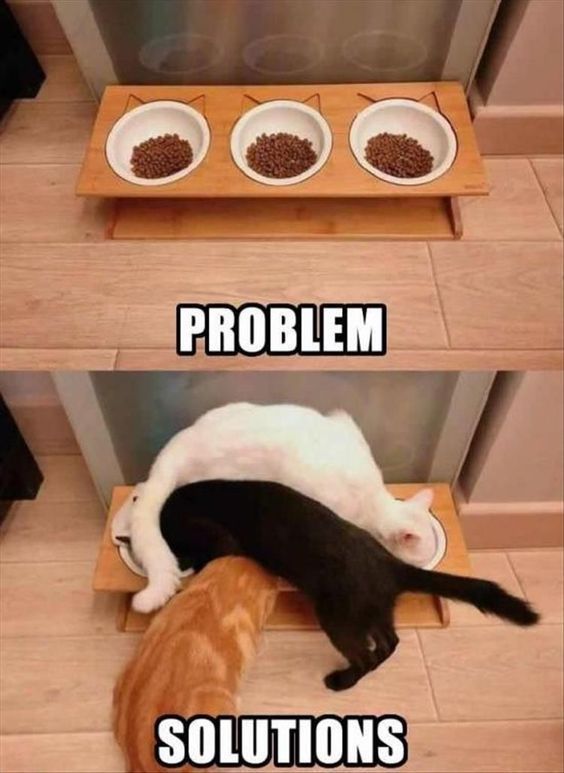
…. But maybe try to come up with alternatives and choose the best solution!
Notes on parts and Self: At this stage, the presence of Self Energy becomes more prominent. It provides a solid foundation of inner wisdom, clarity, and compassion to guide the individual through the problem-solving process. Self Energy helps the person stay centered and connected to their core values while engaging with the problem. Helpful parts that may be involved include: problem-solving part, leader part, assertive communicator part, collaborative part, inner harmony part, etc. Courage comes into play too, and you can read more here regarding courage as one of the innate qualities of Self, distinguished from a courageous part.
Level 7: Self-Led
Individuals at this level experience a deep connection to their Quantum Self (aligned with the IFS concept of Self and Self-energy). They are guided by inner wisdom and a sense of interconnectedness with all of life. This is the stage of Conscious Accountability.

I didn’t have a funny meme for this…
Yet this pic is kind of funny on it’s own accord.
Creepy is not one of the IFS 8 C’s. Am-I-right?
Being Self-led, as per Internal Family Systems (IFS), is a transformative state characterized by deep connection to one’s core essence, the Self. It entails clarity, compassion, and emotional resilience. In this state, decisions align with core values, and there’s effortless compassion towards oneself and others. The Self-led person skillfully manages internal parts, fostering empowered self-leadership. This interconnectedness fosters empathy, healing, and a sense of unity with all living beings. It is a continuous practice of self-awareness, authenticity, and personal growth, leading to inner peace and a positive impact on oneself and others.
Level 8: Superconscious Accountability
At the top of the ladder is Superconscious Accountability. Individuals at this level are fully connected to Self/Self Energy (Quantum Self) and are connected to the larger conscious system (aka the conscious Universe, etc).

Accountability in the sense of “you can count on me” is now the lived action of amplifying love, calling back to love anything that has been imprinted with something other than love, and being a guardian of love.
A Closer Look: Why Are They On That Rung of the Ladder Anyway?
You might be thinking that we should all be at the top rung all of the time, but there are a lot of reasons that we not to be there. Let’s face it: the biological spacesuit is a survival suit first! It also makes many body/mind tweaks along the way.
Here are some reasons why people could be showing up on one rung versus another. Based on these circumstances and experiences, you can likely see why parts behave in the ways that they do. Interestingly there are also parts that carry stuff that are “not ours” — they are carrying “legacy burdens.” I like to think of these as parrot parts… They just picked up something along the way and they think they are helping out by continuing to represent it.
I am putting trauma last on the list, not because it’s the least important, but rather because I want to expand on taking a trauma-informed approach. As always, the biological spacesuit (and the body, and mental processes therein) is always ever striving to be helpful. Sometimes it’s actually helpful, and other times it’s “helpful,” meaning: not actually helpful. A fixed mindset is “helpful” because it conserves precious energy. Learned helplessness is “helpful” for the same reason.
People can develop the habit of showing up on a particular rung of the Accountability Ladder based on lots of factors, including their upbringing, past experiences, beliefs, and the environment they are exposed to. Here are some ideas as to why these habits might have developed:
- Family and Upbringing: The family environment plays a significant role in shaping an individual’s habits and behaviors. If a person grew up in a family where blame, excuses, or lack of personal responsibility were prevalent, they may develop a habit of showing up on the lower rungs of the ladder. Conversely, a family that values accountability, ownership, and healthy communication can foster habits of taking responsibility and showing up at higher rungs.
- Cultural and Social Influences: Cultural and social norms can impact the habit of showing up on the Accountability Ladder. Some cultures or social groups may place greater emphasis on collective responsibility, while others may prioritize individual autonomy. The prevailing attitudes and expectations in a person’s cultural or social context can shape their habits of accountability and responsibility.
- Education and Learning: Education and learning environments can influence the habit of accountability. Schools and educational institutions that emphasize personal responsibility, critical thinking, and problem-solving skills can foster habits of taking ownership. On the contrary, environments that discourage autonomy and critical thinking may contribute to lower levels of accountability.
- Personal Beliefs and Mindset: Personal beliefs, values, and mindset play a crucial role in habit formation. If someone holds a fixed mindset that avoids taking responsibility or believes they are powerless in certain situations, they may develop habits of blame or justification. On the other hand, individuals with a growth mindset and a belief in personal agency are more likely to develop habits of responsibility and proactivity.
- Reinforcement and Consequences: The reinforcement and consequences individuals experience in their personal and professional lives can reinforce certain habits on the Accountability Ladder. If poor behavior or lack of accountability is consistently tolerated or goes unpunished, individuals may continue to show up on lower rungs. Conversely, when positive behavior and accountability are recognized and rewarded, individuals are more likely to develop habits of responsibility and showing up at higher rungs.
- Personal Experiences and Trauma: Previous experiences, including trauma, can shape habits and behaviors. Traumatic experiences can affect an individual’s sense of control, trust, and self-esteem, potentially leading to habits of blame, justification, or withdrawal. Positive experiences, on the other hand, such as supportive relationships or achievements, can reinforce habits of taking responsibility and showing up at higher rungs.
Of course our habits are not fixed or immutable. We can call them back to love. With self-awareness, intentional effort, and a supportive environment, individuals can recognize their current habits and consciously work to develop new habits of accountability and responsibility.
A Closer Look: Parts You May Encounter in Yourself and Others
This is not a full list of parts, but rather parts that you might notice as you reflect on your position on the Accountability Ladder (or you may see in your coachee).
- Fearful Part: This part might be concerned about potential negative consequences of addressing the work problem, such as getting in trouble, facing disciplinary actions, or risking job security. It seeks to protect the individual from perceived threats in the workplace.
- Inner Critic: The inner critic is a common part that may become active in work-related situations. It could be fueling feelings of inferiority or self-doubt, criticizing the person for any perceived mistakes or shortcomings at work.
- Avoidant Part: This part might encourage procrastination or avoidance of the work problem, attempting to shield the individual from the discomfort or stress associated with confronting the issue.
- Perfectionistic Part: The perfectionistic part may be pushing the individual to avoid acknowledging the problem because of a fear of failure or a need to maintain a flawless image at work.
- Anxious Part: This part might generate anxiety about the potential outcomes of addressing the work problem, causing the person to feel overwhelmed and unsure of how to handle the situation.
- People-Pleasing Part: This part might prioritize pleasing others or seeking approval from colleagues or superiors, leading the individual to avoid addressing the problem to maintain harmony or avoid conflict.
- Overachiever Part: The overachiever part might be pushing the individual to work excessively hard to compensate for the perceived problem, leading to burnout or neglecting the need to address the root issue.
- Traumatized Part: If past work-related trauma exists, a traumatized part may be activated, causing the person to re-experience emotions and sensations related to previous adverse workplace experiences.
- Hopeless Part: This part might contribute to a sense of hopelessness, convincing the individual that the work problem is insurmountable or that attempting to resolve it is futile.
- Skeptical Part: This part operates with doubt, caution, and skepticism. The skeptical part’s primary intention is to prevent the individual from being misled, deceived, or taken advantage of in various aspects of life, including work-related situations.
A Closer Look: Using Your Trauma-Informed Lens
Trauma responses can indeed manifest as poor behavior or lower levels of accountability on the Accountability Ladder. Here are some ways in which trauma responses can mask as poor behavior:
1. Lay Blame: Trauma can impact an individual’s ability to take ownership of their actions and outcomes. Instead of acknowledging their role, they may resort to blaming others or external circumstances for their behavior. Trauma-related triggers or unresolved emotions can distort their perception, making it challenging for them to see their own accountability clearly.
2. Justify: Trauma survivors may engage in behaviors that are influenced by past traumatic experiences. They may justify their actions based on their traumatic history, using it as an explanation or excuse for their behavior. Trauma-related triggers can lead them to rationalize their actions and avoid taking full responsibility.
3. Shame and Regret: Trauma can create deep-seated feelings of shame, guilt, or self-blame. Individuals who have experienced trauma may exhibit behaviors that stem from these emotions. They may struggle to move beyond the shame and regret, which can hinder their ability to take ownership and make positive changes.
4. Obligation: Trauma can impact an individual’s motivation, engagement, and sense of self-worth. They may fulfill their responsibilities out of a sense of obligation rather than genuine personal commitment. Trauma-related issues such as low self-esteem or emotional numbness can contribute to a lack of personal investment and lower levels of accountability.
5. Responsibility: Trauma responses can make it challenging for individuals to fully step into the responsibility level. Trauma-related symptoms such as hypervigilance, fear, or emotional dysregulation can interfere with their ability to take proactive ownership and address issues effectively. They may struggle to trust themselves and others, which can hinder their progress on the ladder.
It is crucial to approach individuals displaying poor behavior through a trauma-informed lens, recognizing that their actions may be influenced by underlying traumatic experiences. Understanding the impact of trauma can help create a supportive environment that promotes healing and growth. Empathy, patience, and providing access to appropriate resources, such as trauma-informed therapy, can help individuals navigate their trauma responses and move towards higher levels of accountability over time. As always: stay in your scope of practice. In the workplace want to be trauma-informed so that we are not retraumatizing people, we are not suddenly psychotherapists. I like to say: I work with derailers, not disorders. If you suspect a disorder, contact your HR Department as they would be best to get the person on the path to the help that they need.

